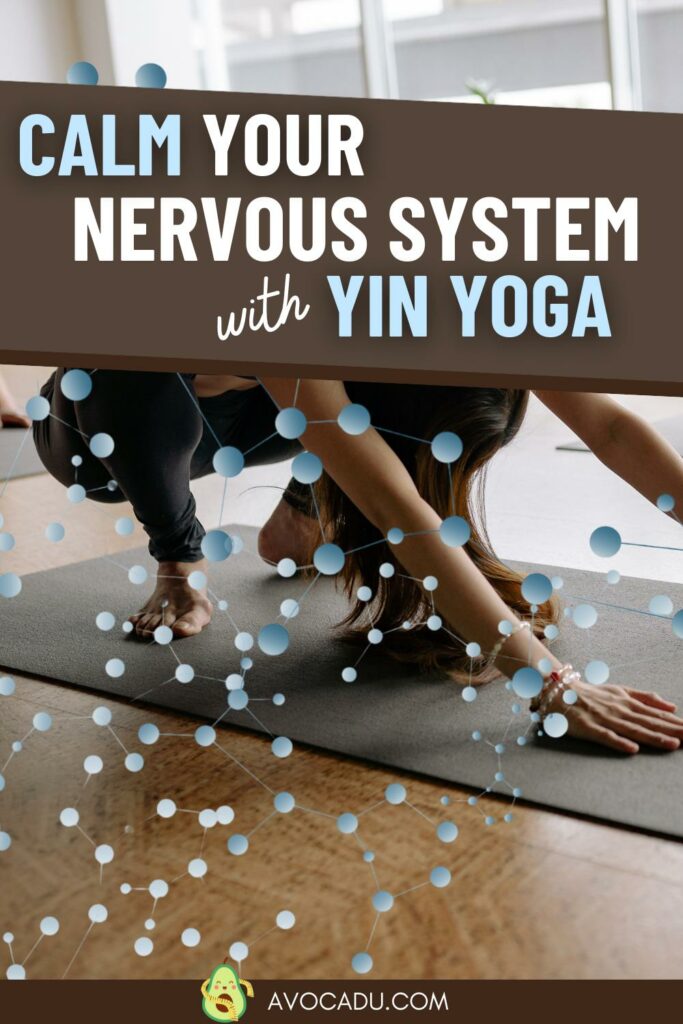How Yin Yoga Combats Stress and Anxiety
Ever found yourself feeling overwhelmed by stress or anxiety? It’s something many of us face in our busy, fast-paced lives.
Between work, family obligations, and the constant stream of information and demands, it’s no wonder we often feel frazzled and tense.
But what if there was a simple, effective way to help you find some calm amidst the chaos? Yin Yoga might be just what you need!
This gentle, meditative form of yoga is designed to help you slow down, relax, and connect with your body and mind.
Let’s explore how Yin Yoga can transform your approach to managing stress and anxiety.
Related article: Exploring Different Styles of Yoga: Which One Suits You Best?
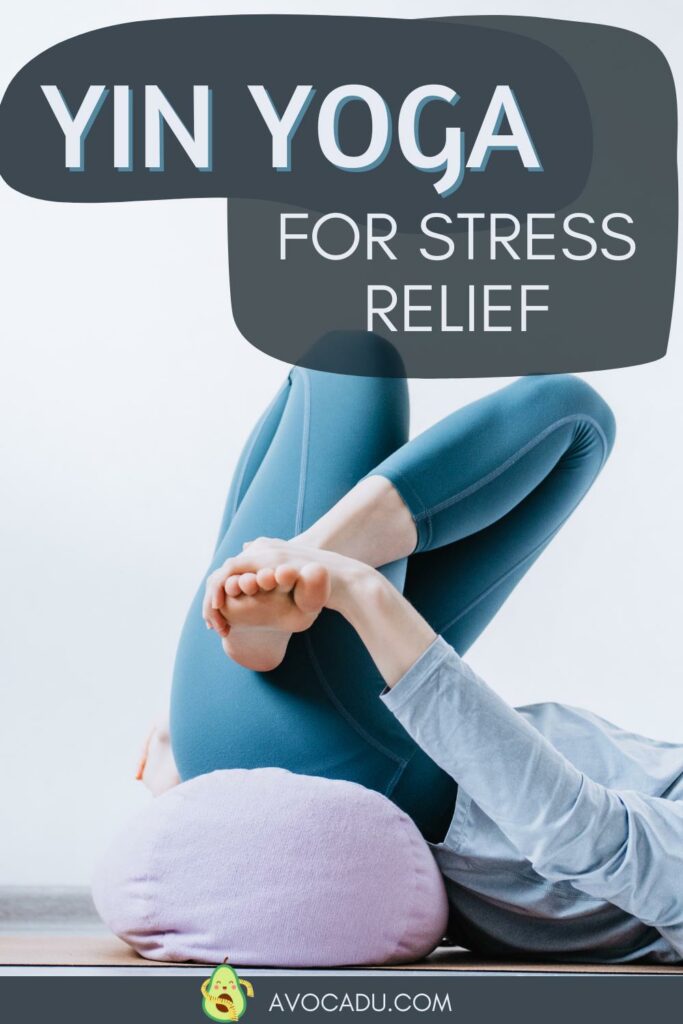
This post may contain affiliate links, which helps keep this content free. Please read our disclosure for more info.
What is Yin Yoga?
Yin Yoga is a slow-paced style of yoga where you hold poses for longer periods, typically between three to five minutes. Unlike more dynamic yoga styles that focus on building strength and stamina,
This style of yoga targets your deep connective tissues, such as ligaments, joints, bones, and the fascia network. This practice encourages stillness and deep relaxation in your body.
Yin Yoga has its roots in ancient Chinese and Taoist traditions and was later integrated into modern yoga practices in the late 1970s by martial arts expert and yoga teacher Paulie Zink.
Zink combined elements of traditional Hatha yoga with Taoist principles of yin and yang to create a practice that balances the body’s energies.
In Yin Yoga, the emphasis is on finding a comfortable, sustainable position and allowing gravity to gently deepen the stretch.
This approach helps to enhance flexibility, improve circulation, and maintain the health of your joints and connective tissues.
The long holds in each pose also provide an opportunity to cultivate mindfulness and focus on your breath, which can help quiet your mind and reduce stress.
How Yin Yoga Works on the Body
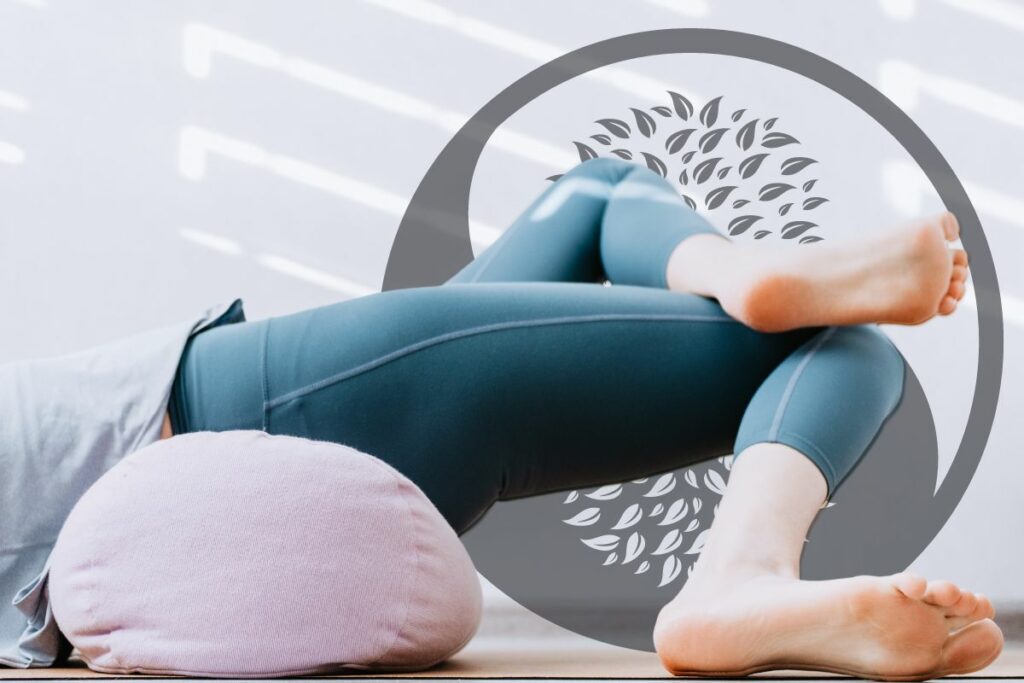
When you practice Yin Yoga, you’ll notice significant improvements in your flexibility and joint health.
Unlike more vigorous styles of yoga that primarily work on your muscles, Yin Yoga targets the deeper layers of your body’s connective tissues. These include your ligaments, tendons, fascia, and even your bones.
By holding poses for extended periods, typically between three to five minutes, you apply gentle, sustained pressure to these tissues, encouraging them to stretch and lengthen. This process helps enhance your overall flexibility and range of motion.
One of the key benefits of Yin Yoga is its ability to improve circulation.
As you hold each pose, blood flow increases to the targeted areas, which aids in the delivery of oxygen and nutrients to your tissues and helps remove metabolic waste products. This enhanced circulation can contribute to healthier joints and a more resilient body.
Yin Yoga also places a strong emphasis on mindful breathing. During your practice, you’re encouraged to focus on slow, deep breaths, which helps you stay present and connected to your body.
This mindful breathing has a calming effect on your nervous system, promoting a state of relaxation and reducing stress.
As you concentrate on your breath, you can release physical tension, allowing your muscles and connective tissues to relax and open up further. This creates space in your body, helping to alleviate tightness and discomfort.
Moreover, the meditative nature of Yin Yoga fosters a deeper awareness of your body. By holding poses for longer periods, you have the opportunity to observe the subtle sensations and changes that occur.
This increased body awareness can help you identify and address areas of chronic tension and imbalance, contributing to overall better physical health and well-being.
Yin Yoga and the Nervous System
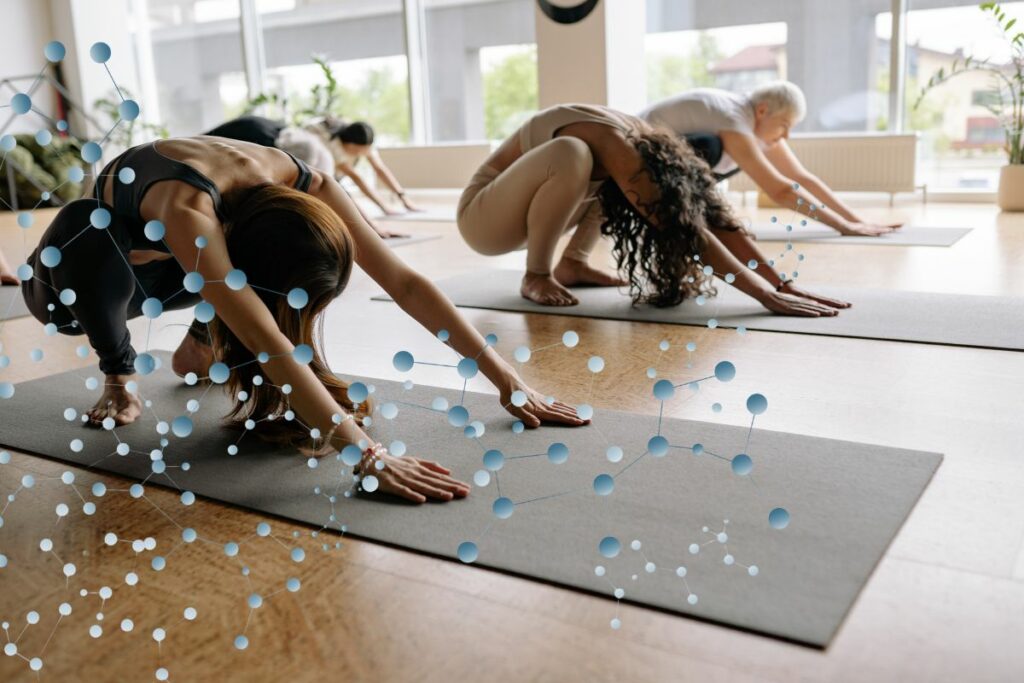
One of the most profound effects of Yin Yoga is its impact on your nervous system. By holding poses for longer durations and practicing deep breathing, Yin Yoga activates the parasympathetic nervous system.
This is the part of your nervous system responsible for rest and digestion, which helps counteract the stress response. As you relax into each pose, your body’s stress levels decrease, promoting a sense of calm and well-being.
In today’s fast-paced world, many of us spend too much time in the “fight or flight” mode, which is controlled by the sympathetic nervous system.
This constant state of alertness can lead to chronic stress, anxiety, and a host of physical ailments.
Yin Yoga offers a powerful antidote to this by engaging the parasympathetic nervous system, which is often referred to as the “rest and digest” system. When this part of the nervous system is activated, your body can shift from a state of high alert to one of relaxation and recovery.
During Yin Yoga, the long-held poses give your body the time it needs to truly unwind. As you settle into each posture, you have the opportunity to focus on your breath, taking slow, deep inhales and exhales.
This type of breathing signals to your brain that it is safe to relax. In response, your heart rate slows down, blood pressure decreases, and muscle tension eases.
This shift in your physiological state can significantly reduce the physical symptoms of stress and anxiety.
The practice of Yin Yoga also encourages a mental state of mindfulness and introspection. As you hold each pose, you become more aware of your thoughts and feelings, creating a space to observe them without judgment.
This mindfulness can help you break the cycle of negative thinking and emotional reactivity that often accompanies stress and anxiety.
By fostering a sense of mental stillness, Yin Yoga allows you to cultivate inner peace and resilience.
Regular practice of Yin Yoga can lead to long-term benefits for your nervous system. Over time, your body becomes more adept at accessing the parasympathetic state, making it easier to manage stress and maintain a sense of calm in your daily life.
This can improve your overall mental and emotional well-being, enhancing your ability to cope with life’s challenges.
Mental and Emotional Benefits
Yin Yoga isn’t just about physical benefits. It also has significant mental and emotional advantages. The meditative aspect of Yin Yoga encourages you to turn inward and focus on your thoughts and feelings.
As you hold each pose, you might find yourself confronting stored emotions and mental tension. This process can be incredibly therapeutic, helping you release negative emotions and find mental clarity.
When you engage in Yin Yoga, the extended time spent in each pose provides a unique opportunity for self-reflection and introspection.
This inward focus allows you to become more aware of your mental landscape, noticing patterns of thought and emotional reactions that might otherwise go unnoticed in the hustle and bustle of daily life.
By creating a quiet, still space within your practice, you give yourself the chance to observe these mental patterns without judgment, fostering a deeper understanding of yourself.
As you hold each pose, you might encounter areas of mental and emotional resistance. These moments can reveal where you are holding onto stress, anxiety, or unresolved emotions.
The act of staying with the discomfort, rather than avoiding it, can be a powerful tool for emotional release.
Yin Yoga teaches you to sit with these feelings, breathe through them, and ultimately let them go. This practice of emotional release can lead to profound healing and a sense of lightness and freedom.
The focus on breath in Yin Yoga also plays a crucial role in mental and emotional well-being. Deep, mindful breathing has been shown to reduce anxiety and promote a sense of calm.
When you concentrate on your breath, you help to anchor your mind in the present moment, reducing the tendency to ruminate on past events or worry about the future. This present-moment awareness can decrease feelings of anxiety and help you cultivate a sense of inner peace.
Over time, regular practice of Yin Yoga can lead to lasting changes in your mental and emotional health.
By repeatedly creating a space for self-reflection and emotional release, you build emotional resilience. You become better equipped to handle stress and emotional challenges with grace and equanimity.
This resilience can translate into greater overall life satisfaction and a more balanced, harmonious state of mind.
The meditative aspect of Yin Yoga also promotes mental clarity. By quieting the mind and focusing inward, you can experience a sense of mental stillness that is often elusive in daily life.
This clarity can help you make better decisions, improve your concentration, and enhance your creativity. It allows you to approach problems with a fresh perspective and a calm, focused mind.
Simple Yin Yoga Poses to Try
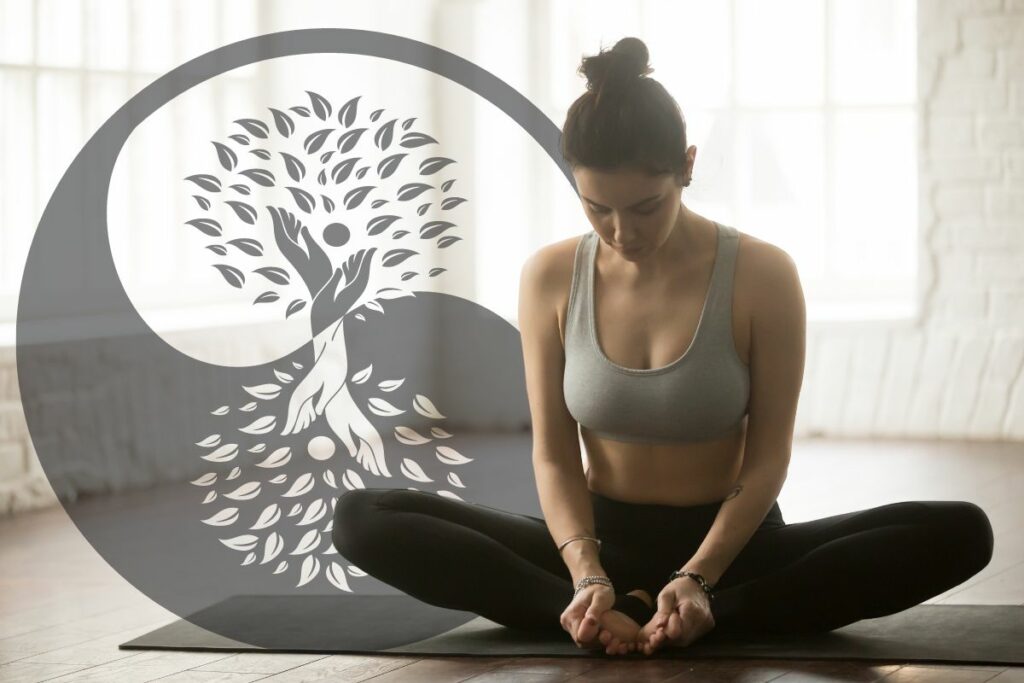
If you’re new to Yin Yoga, here are a few beginner-friendly poses to get you started. These poses are designed to be held for several minutes, allowing you to experience deep relaxation and stretch your connective tissues.
Remember to focus on your breath and find a comfortable position that you can maintain for several minutes.
Butterfly Pose
- How to do it: Sit on the floor with the soles of your feet together and your knees falling open to the sides. Lean forward gently, keeping your spine long.
- Benefits: Stretches the inner thighs, hips, and lower back. Encourages relaxation and releases tension in the lower body.
- Hold for: 3-5 minutes, focusing on your breath.
Caterpillar Pose
- How to do it: Sit with your legs extended straight in front of you. Slowly fold forward, reaching for your feet or shins. Allow your spine to round and relax.
- Benefits: Stretches the hamstrings, spine, and lower back. Promotes a deep sense of relaxation.
- Hold for: 3-5 minutes.
Sphinx Pose
- How to do it: Lie on your stomach and prop yourself up on your forearms, keeping your elbows directly under your shoulders. Let your lower back soften.
- Benefits: Gently stretches the spine and stimulates the sacral-lumbar arch. Helps to open the chest and improve posture.
- Hold for: 3-5 minutes.
Child’s Pose
- How to do it: Kneel on the floor, sit back on your heels, and then fold forward, bringing your forehead to the mat. Extend your arms in front of you or let them rest by your sides.
- Benefits: Stretches the hips, thighs, and ankles. Calms the mind and relieves stress and fatigue.
- Hold for: 3-5 minutes.
Reclining Twist
- How to do it: Lie on your back with your knees bent and feet flat on the floor. Drop both knees to one side while keeping your shoulders on the mat. Turn your head in the opposite direction.
- Benefits: Stretches the spine, shoulders, and hips. Helps to release tension in the back and improve spinal mobility.
- Hold for: 3-5 minutes on each side.
Dragon Pose
- How to do it: Start in a low lunge with your back knee on the ground. Bring your front foot forward, aligning your knee over your ankle. You can rest your hands on the floor or blocks.
- Benefits: Stretches the hip flexors, quads, and groin. Opens the hips deeply.
- Hold for: 3-5 minutes on each side.
Legs Up the Wall Pose
- How to do it: Sit close to a wall and swing your legs up so that your heels and legs rest against the wall. Your back should be flat on the floor, and your arms can rest by your sides.
- Benefits: Relieves tired legs and feet, promotes circulation, and provides a gentle stretch to the hamstrings and lower back. Calms the nervous system.
- Hold for: 5-10 minutes.
Tips for Practicing Yin Yoga at Home
To get the most out of your Yin Yoga practice at home, consider these tips to create a supportive and nurturing environment.
Create a Calming Environment
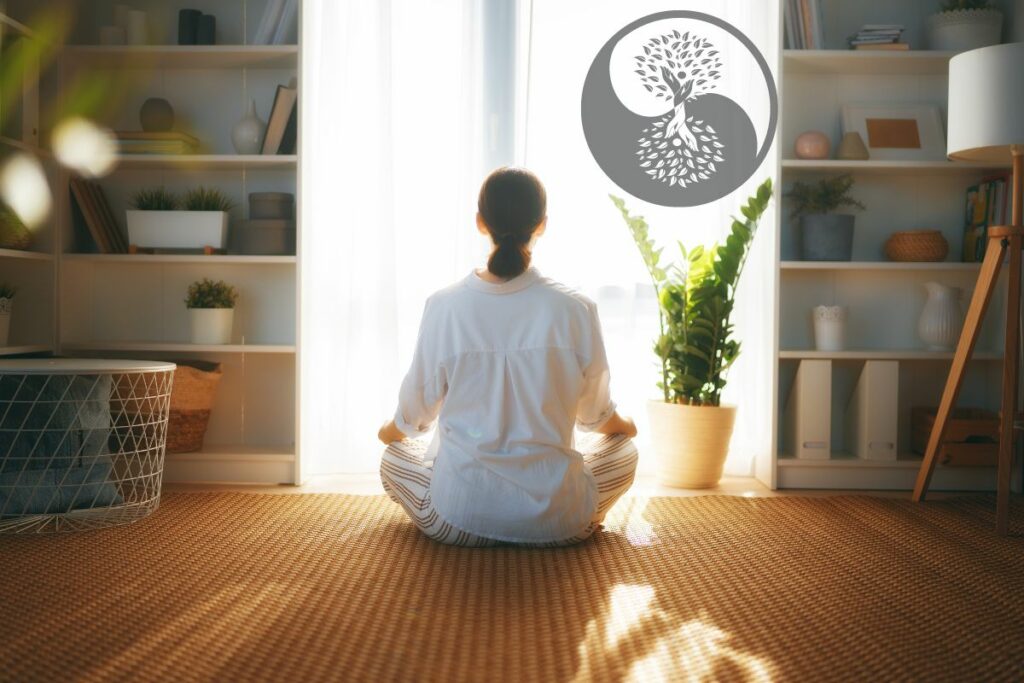
Find a quiet space where you won’t be disturbed. This could be a dedicated room or a corner of your home where you feel comfortable and relaxed.
Dimming the lights can help signal to your body that it’s time to unwind. Soft, ambient music or nature sounds can enhance the tranquil atmosphere, helping you to stay present and relaxed.
Lighting a candle or using an essential oil diffuser with calming scents like lavender or chamomile can further enhance the calming environment, making your practice feel more like a retreat.
Use Props
Props like bolsters, blankets, and blocks are invaluable in Yin Yoga. They provide support and make poses more comfortable, allowing you to relax more deeply into each posture.
Bolsters can support your back in reclining poses, blankets can cushion your knees and ankles, and blocks can bring the floor closer to you in seated or forward-bending poses.
Don’t hesitate to use these props to help you find comfort and ease, which is crucial for holding poses for extended periods. You can also use pillows and towels if you don’t have traditional yoga props available.
Wear Comfortable Clothing
Choose clothing that allows you to move freely and comfortably. Soft, stretchy fabrics are ideal for Yin Yoga, as they won’t restrict your movement or distract you during your practice. Layers can be helpful, as they allow you to adjust your temperature easily.
Warm Up Your Space
If possible, practice in a warm room. Warm muscles and connective tissues are more pliable and can stretch more safely and effectively.
If your space is cool, consider using a space heater or covering yourself with a blanket during poses.
Listen to Your Body
Pay attention to your body’s signals. Yin Yoga is about finding a balance between effort and ease. You should feel a gentle stretch, but never pain.
If a pose feels too intense, use props or adjust your position to make it more comfortable. Remember that each day is different, and your body might feel different from one practice to the next.
Stay Present
Focus on your breath and stay present throughout your practice. If your mind starts to wander, gently bring your attention back to your breath and the sensations in your body. This mindfulness can deepen the calming effects of Yin Yoga and help you connect more deeply with yourself.
Embrace the Calming Benefits of Yin Yoga
Yin Yoga offers a gentle yet powerful way to combat stress and anxiety. By incorporating this practice into your routine, you can improve your physical flexibility, calm your nervous system, and achieve greater mental and emotional balance.
The long-held poses and mindful breathing techniques help you connect deeply with your body and mind, fostering a sense of tranquility and well-being.
Give Yin Yoga a try and experience the calming benefits for yourself, and see how it can transform your approach to daily stress and overall health.
